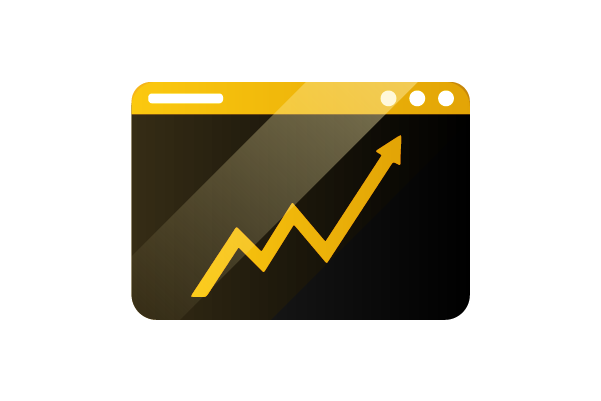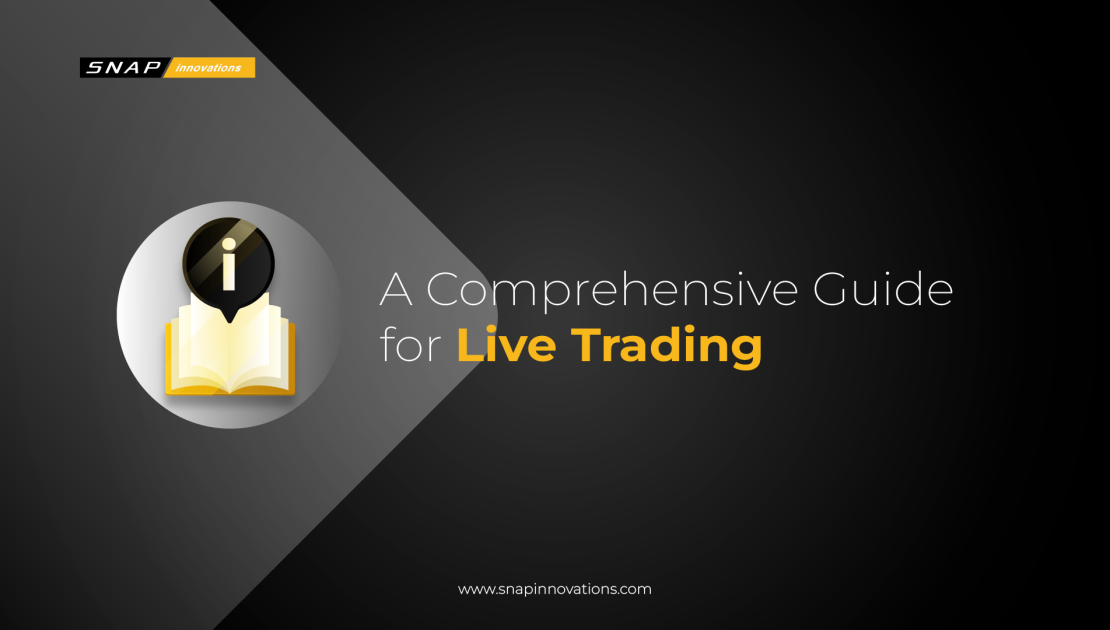In the dynamic world of finance, live trading has emerged as a powerful tool for traders of all levels. Whether you’re a seasoned veteran or a novice just starting out, understanding the nuances of live trading can open up a world of opportunities to capitalize on market movements and potentially achieve financial success. This comprehensive guide will delve into the intricacies of live trading, providing you with a thorough understanding of its concepts, strategies, and potential pitfalls.
Live trading involves engaging with financial markets in real-time, buying and selling assets such as stocks, currencies, commodities, or derivatives. Unlike paper trading or simulations, live trading involves real capital and therefore carries the risk of actual financial loss, as well as the potential for real gains. It demands a deep understanding of market dynamics, trading strategies, risk management, and emotional control. Traders must stay abreast of global economic events, market trends, and technical indicators to make informed decisions.
One of the key aspects of live trading is the development of a solid trading strategy. This includes defining your trading goals, risk tolerance, and the time you can dedicate to trading. Strategies vary from day trading, where positions are opened and closed within the same day, to swing trading, which involves holding positions for several days or weeks to capitalize on expected upward or downward market shifts.
Each strategy requires different skills and approaches to market analysis. Additionally, understanding and using trading tools and platforms efficiently is crucial in executing trades quickly and effectively. Another important aspect is learning to manage emotions, as the high-pressure environment of live trading can lead to hasty decisions driven by fear or greed, which can undermine a trader’s success.
What is Live Trading?
 Live trading, also known as real-time trading, is the act of buying and selling financial instruments, such as stocks, forex, commodities, and cryptocurrencies, in real-time market conditions. It involves placing orders directly on the market through an online brokerage platform, allowing traders to react to immediate price fluctuations and execute trades accordingly. Live trading stands in contrast to paper trading, a simulation-based approach where traders practice trading strategies without risking real capital.
Live trading, also known as real-time trading, is the act of buying and selling financial instruments, such as stocks, forex, commodities, and cryptocurrencies, in real-time market conditions. It involves placing orders directly on the market through an online brokerage platform, allowing traders to react to immediate price fluctuations and execute trades accordingly. Live trading stands in contrast to paper trading, a simulation-based approach where traders practice trading strategies without risking real capital.
Live trading requires a comprehensive understanding of market dynamics, technical analysis, and the ability to make quick decisions based on current market data. Unlike paper trading, it involves real financial risk and the potential for both profit and loss. Traders engaging in live trading must be aware of various factors such as market trends, news events, economic indicators, and political developments, which can all influence market prices.
Read More: Gamma Scalping: Hedging and Profiting from Option Greeks
Furthermore, live trading demands emotional discipline and strong risk management skills to navigate the often volatile and unpredictable nature of financial markets. Successful live traders often use a combination of fundamental and technical analysis to inform their trading decisions and rely on a well-thought-out trading plan to guide their actions in the market. This approach helps in mitigating risks and maximizing the potential for profitable trades.
The Allure of Live Trading
Live trading attracts traders for several reasons. Firstly, it offers the thrill and excitement of participating in the fast-paced world of financial markets, providing a sense of immediacy and adrenaline rush. Secondly, live trading allows traders to potentially profit from short-term market movements, capitalizing on price fluctuations that may not be captured by long-term investment strategies. Additionally, live trading provides traders with real-time feedback on their trading decisions, enabling them to refine their strategies and improve their performance over time.
Another allure of live trading is the level of control it offers traders over their investments. Unlike passive investment strategies, live trading involves active decision-making, giving traders the ability to quickly adjust their positions in response to market changes. This flexibility can be particularly appealing in volatile markets, where the ability to react swiftly can be crucial for success. It also allows traders to leverage their market knowledge and analysis skills directly, potentially leading to more tailored and informed trading decisions.
Furthermore, advancements in technology have made live trading more accessible than ever. With the advent of sophisticated online trading platforms, traders can access global markets from virtually anywhere, using a variety of devices such as computers, tablets, and smartphones. These platforms offer a range of analytical tools, real-time data, and automated trading options, enhancing the ability to make informed decisions quickly. This technological evolution has opened up live trading to a broader range of individuals, from professional traders to hobbyists, making it a more inclusive and diverse field. The integration of social trading platforms, where traders can share insights and strategies, has also contributed to its growing popularity, creating a community aspect that appeals to many.
Essential Elements of Live Trading
 Before embarking on your live trading journey, it’s crucial to equip yourself with the fundamental knowledge and tools necessary for success. Here are some key elements to consider:
Before embarking on your live trading journey, it’s crucial to equip yourself with the fundamental knowledge and tools necessary for success. Here are some key elements to consider:
1. Choose a Reputable Broker
Selecting a reputable broker is a critical first step in live trading. A reliable broker not only provides access to the financial markets but also ensures that your investments are secure. It’s important to choose a broker that is regulated by credible financial authorities, as this offers a level of protection and recourse in the event of disputes or malpractice. Additionally, the broker should offer a platform that is both user-friendly and equipped with the necessary tools for effective trading.
This includes real-time data, analytical tools, and customer support. Different brokers cater to different types of traders – some are better suited for beginners offering educational resources and simple interfaces, while others cater to experienced traders with advanced tools and features. Furthermore, consider the fees and commissions charged by the broker, as these can affect your overall profitability.
2. Develop a Trading Plan
A well-defined trading plan is essential for successful live trading. This plan should clearly state your financial goals, whether short-term or long-term, and outline your approach to achieving these goals. It’s important to establish the criteria for entering and exiting trades, which can be based on technical analysis, fundamental analysis, or a combination of both. Your trading plan should also define your risk tolerance, indicating how much of your capital you are willing to risk on each trade.
Consistency in following your plan is key, as it helps in maintaining discipline, especially in volatile market conditions. Additionally, your plan should be flexible enough to adapt to changing market conditions. Regularly reviewing and adjusting your trading plan in response to your trading performance and market changes can help in refining your strategies and improving overall effectiveness.
3. Understand Technical Analysis
Technical analysis is a fundamental tool for live traders. It involves analyzing statistical trends gathered from trading activity, such as price movement and volume, to forecast future price movements. Understanding how to read and interpret charts is crucial; this includes familiarizing yourself with different chart types like line, bar, and candlestick charts.
Learning about various technical indicators, such as moving averages, Relative Strength Index (RSI), and Bollinger Bands, is also important as these can provide valuable insights into market trends and potential reversal points. Patterns, such as head and shoulders or triangles, can also offer clues about future market movements. However, it’s important to remember that technical analysis is not infallible. It should be used in conjunction with other forms of analysis and within the context of a well-rounded trading strategy.
4. Practice Risk Management
Effective risk management is crucial in live trading to protect your capital. This includes setting stop-loss orders to limit potential losses on a trade. Stop-losses can be set at a percentage of your total account balance or based on technical analysis, such as below a support level. Position sizing is another key aspect of risk management; it involves determining how much capital to allocate to a single trade based on your risk tolerance. It’s also important to diversify your trades to spread risk across different instruments and markets. Emotional discipline plays a critical role in risk management – making decisions based on fear or greed can lead to significant losses. Regularly reviewing your trades to learn from successes and failures can help in refining your risk management strategies.
5. Stay Informed
Staying informed about market news and economic events is vital for live traders. Economic reports, company earnings announcements, political events, and other news can have significant impacts on financial markets. Subscribing to financial news services, following market analysts, and using economic calendars can help you stay updated. It’s also important to understand how different types of news affect various financial instruments.
For example, currency markets may be more sensitive to interest rate changes, while stock markets may react strongly to corporate earnings reports. Being aware of the timing of major announcements can also help in planning trades; significant news events can lead to increased market volatility, presenting both risks and opportunities. Continuously educating yourself about the markets and global economic conditions is essential for making informed trading decisions.
Navigating the Live Trading Landscape
Once you’ve grasped the basics of live trading, it’s time to delve into the practical aspects of executing trades in the real-time market. Here are some key considerations:
1. Order Types
Understanding different order types is a fundamental aspect of live trading, as it significantly influences how and when your trades are executed. Market orders are executed immediately at the current market price and are ideal for traders who prioritize speed over price control. However, in highly volatile markets, market orders can be filled at a substantially different price than expected. Limit orders, on the other hand, allow traders to specify the price at which they want to buy or sell a security.
This type of order provides price control but does not guarantee execution, as the market may never reach the specified price. Stop orders are designed to limit losses or protect profits. A stop order becomes a market order once a specified price level is reached. There’s also the stop-limit order, which combines the features of stop and limit orders. Understanding these different order types and when to use them is crucial for effective trade execution and achieving your trading objectives.
2. Order Execution
Order execution in live trading involves more than just clicking a button. The speed and price at which your order is filled can be affected by various factors. Market liquidity, or the ability to buy and sell assets without causing a significant price movement, plays a crucial role. In liquid markets, orders are more likely to be filled quickly and at desired prices. Conversely, in less liquid markets, orders might take longer to fill, and prices can be more volatile.
The bid-ask spread, which is the difference between the highest price a buyer is willing to pay and the lowest price a seller is willing to accept, also impacts execution. A wider spread often indicates lower liquidity and can lead to higher trading costs. Additionally, large order sizes can affect market prices, especially in less liquid markets. Understanding these factors can help traders choose the appropriate times and conditions for placing orders, thus enhancing the chances of favorable executions.
Read Next: Day Trading: A Comprehensive Guide for Aspiring Traders
3. Trading Psychology
Trading psychology is a critical component of successful live trading. The psychological challenges faced by traders, such as dealing with loss, managing fear and greed, and maintaining discipline, can be as demanding as the technical aspects of trading. Developing a strong mental framework is essential to make rational decisions, especially under the pressure of fluctuating market conditions.
Emotional control is key; allowing emotions like fear or greed to drive trading decisions can lead to impulsive and often detrimental actions. It’s important to adhere to your trading plan and not deviate from it based on emotional responses to market movements. Traders should also be aware of cognitive biases, such as confirmation bias or overconfidence, which can skew perception and decision-making. Regular self-assessment, seeking feedback from peers, and possibly working with a trading coach can help in cultivating a resilient and disciplined trading mindset.
Expanding Your Live Trading Horizons
 As you gain experience and confidence in live trading, you can explore more advanced strategies and techniques to enhance your trading performance. Here are some areas to consider:
As you gain experience and confidence in live trading, you can explore more advanced strategies and techniques to enhance your trading performance. Here are some areas to consider:
- Algorithmic Trading: Explore the use of automated trading systems, also known as algorithms, to execute trades based on predefined criteria and market conditions.
- High-Frequency Trading (HFT): Investigate the world of HFT, where sophisticated algorithms execute large volumes of trades at ultra-high speeds.
- Trading Options: Expand your trading horizons by incorporating options trading strategies, which allow you to speculate on future price movements.
Conclusion
Live trading offers a dynamic and potentially rewarding avenue for individuals seeking to participate in the financial markets. By equipping yourself with knowledge, developing a sound trading plan, and employing effective risk management strategies, you can navigate the live trading landscape and potentially achieve your financial goals. Remember, live trading is a continuous learning process, and success often hinges on the ability to adapt, evolve, and refine your trading approach as market conditions change.


